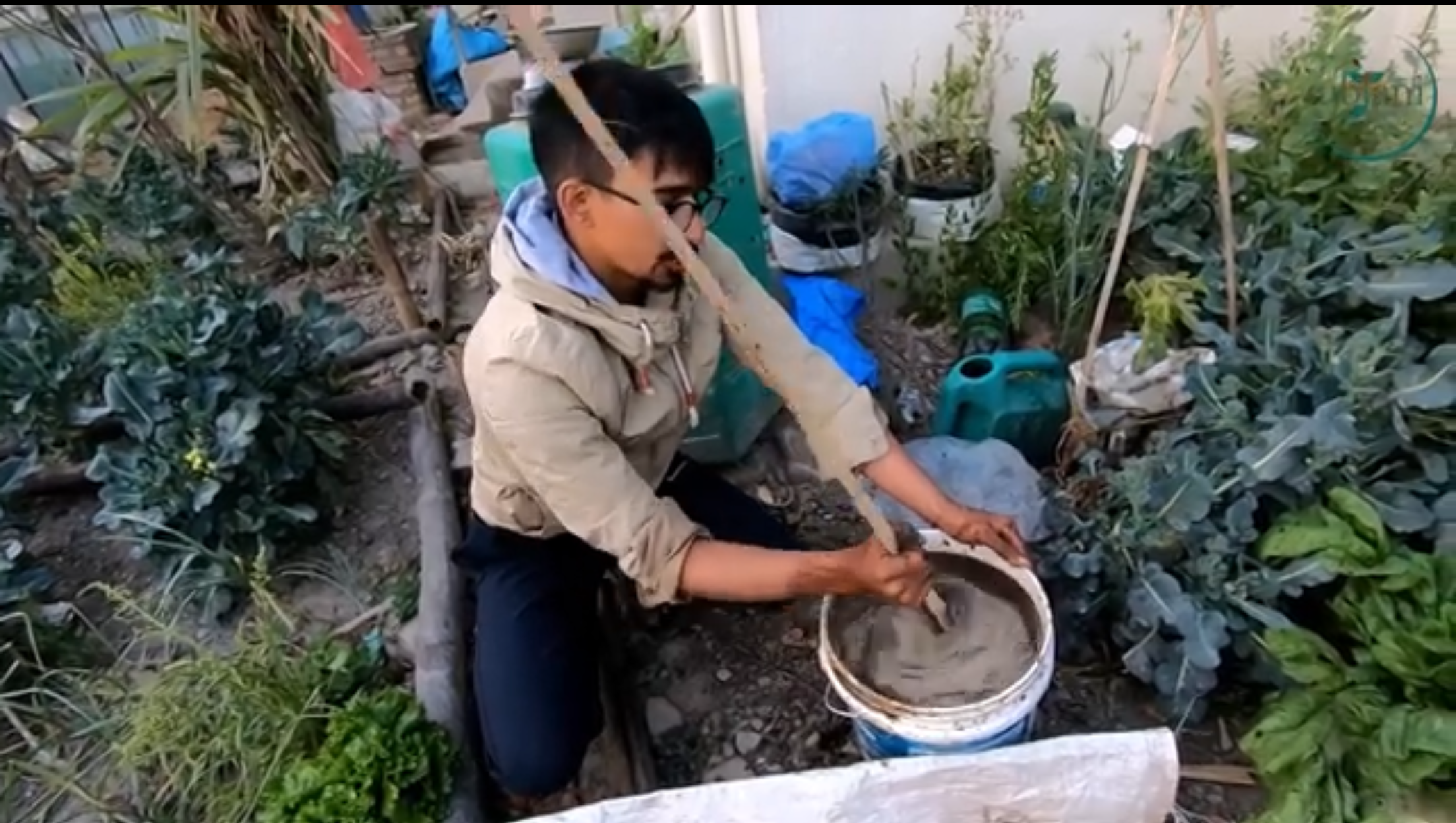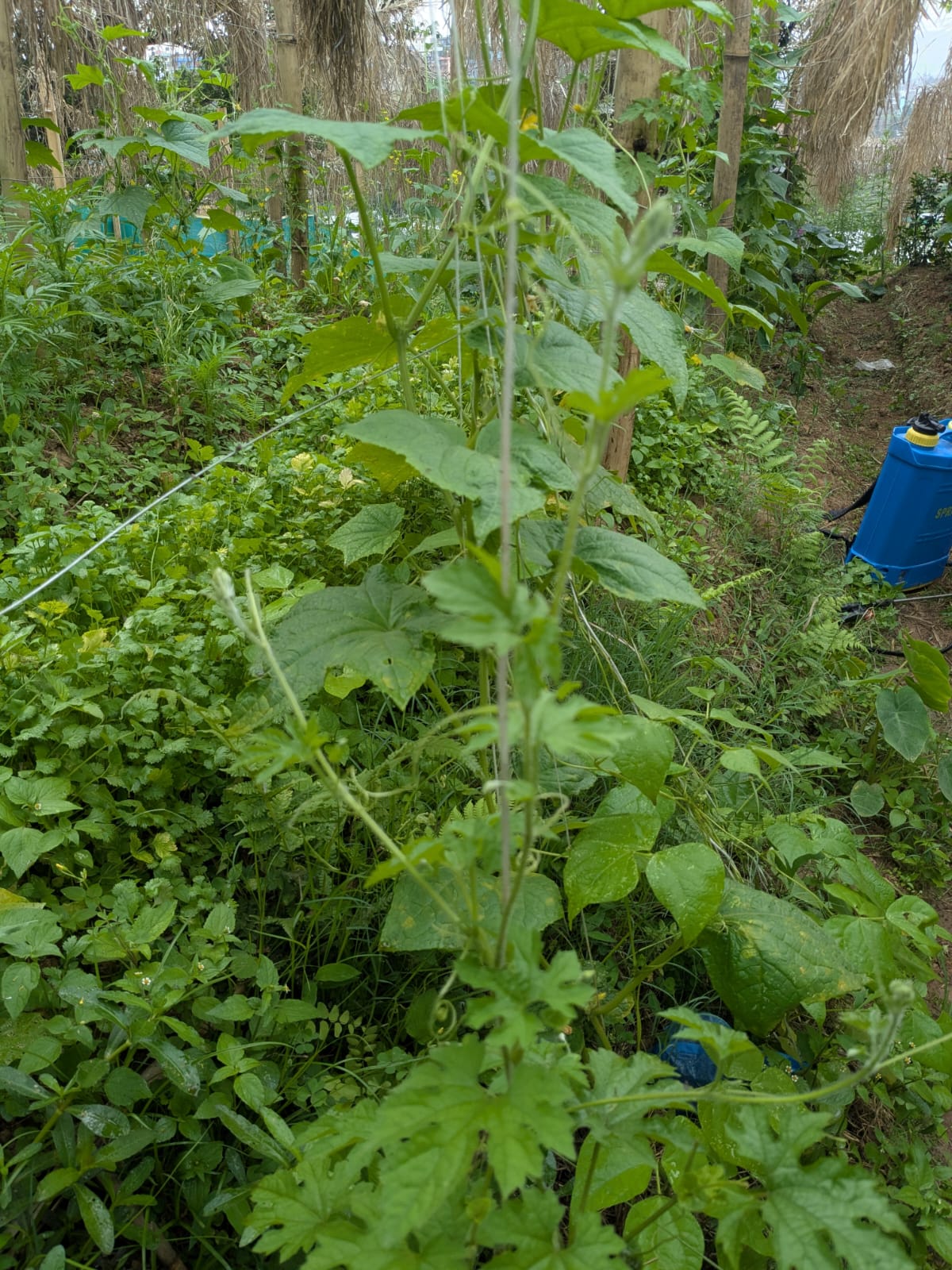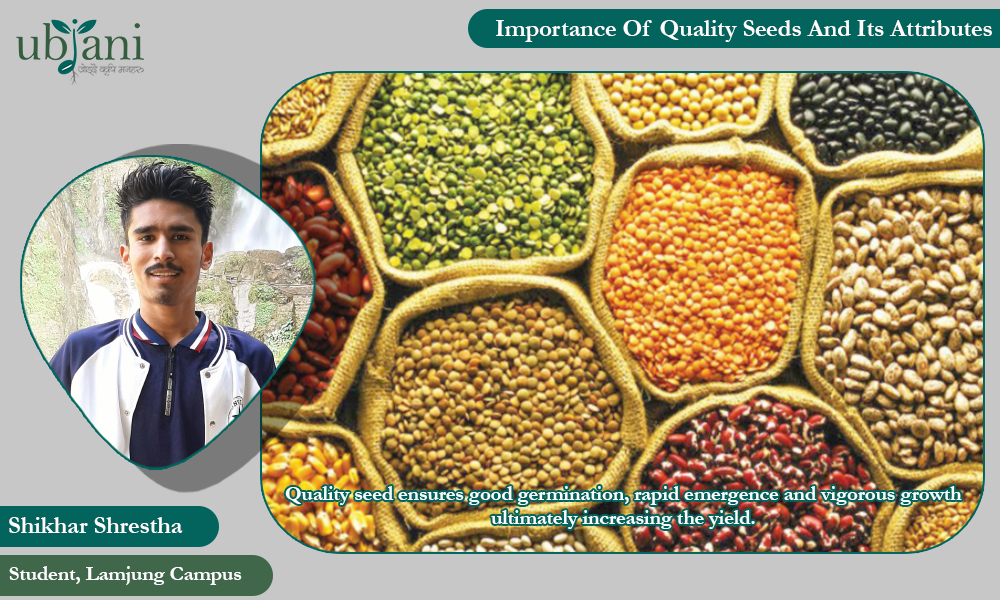
Seed storage is the preservation of seeds under controlled environmental conditions which will prolong the viability of the seeds for long period. Seeds of different species are being stored from ancient times. Storage techniques have evolved from normal godown to cryogenic tanks and gene banks. But in context of developing countries like Nepal, seed storage techniques are primitive, and traditional which leads to loss in viability of seeds. Some seed storage techniques common in Nepal are:
Bamboo bin storage:
Bamboo bins are widely used to store paddy seeds in Nepal. Bins are plastered with cow dung slurry, mustard cakes or painted with neem cake solution which acts as a disinfectant and insect repellent. The painting process should be repeated in every four months for better results. Weevils are the major problem in this system and some rodents like rat may penetrate hole into those bins and losses are common to this system of storage. These bins are also used to store wheat, millet and many other seeds.

Corn ears tied and hung in sticks or rope:
This technique is used almost all over the world. Unhusked corns are tied on ears and hung with tip downward to prevent moisture entry. In some places husked corn are also hung for storage for short time. Insects like weevils and pests like rats are common problems in this method of storage. The stored corns are also susceptible to damage by birds and other creatures.

Mud jar storage for threshed cereals and pulses:
Cereals and pulses after threshing are kept in mud beans. Under cool conditions seeds are viable for long time, but they also have tendency to absorb moisture. Hence, to maintain dryness the jar should be covered a quarter with wood ash or dry charcoal. In case of frequent opening, charcoal or Ash should be changed in each opening. This method is also suitable for storing vegetable seeds.

Although traditional methods of seed storage are economical and eco-friendly, slight modification in these techniques can bring noticeable change in viability of seed. Some of the modern techniques of seed storage are:
Use of drying beads:
A novel zeolite desiccant made up of alumino-silicate called drying beads when combined with inexpensive hermetic containers can dry seeds and maintain the seed in dry conditions during storage. This simple storage and drying system enables the development and distribution of more productive varieties resulting in higher quality crops and increased income. An international team led by Kent Bradford is working on this inexpensive method of storage in countries like Nepal, India and Thailand.

Super grain bag:
Super grain bag is a farmer-friendly storage bag that allows cereal grains and other crops (maize or coffee) to be safely stored for extended periods. The bag fits as a liner inside existing storage bags (woven polypropylene or jute bags). Super bags reduce the flow of both oxygen and water between the stored grain or seed and the outside atmosphere. When properly sealed, respiration of grain and insects inside the bag reduce oxygen levels from 21% to 5%. This reduction reduces insects to less than 1 insect/kg of grain without using insecticides often within 10 days of sealing. The stability of controlled grain moisture inside the bag prevents wetting or drying of grain. This stability reduces the degree of grain cracking, and so head rice recoveries are higher upon milling.

However, the viability and storage life of seeds and grains are also related to genetic and physical quality of them. Use of modern storage techniques can enhance the storage life and quality of seeds hence better planting materials can be availed to farmers which will ultimately result in higher quality and quantity crops and increased income.

















